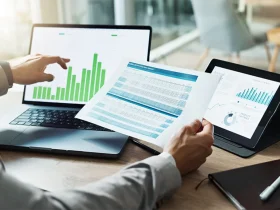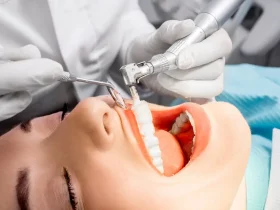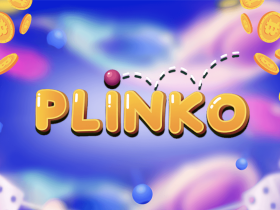Endometrial tissues are made up of blood cells, connective tissues and glands. The tissue normally grows in the uterus and prepares the lining of the womb for ovulation. Endometrial implants refer to buildups and accumulation of endometrial tissues in locations outside of the uterus, or on the exterior side. When the endometrial tissue grows outside the uterus, the condition is known as endometriosis. It can develop anywhere in the body, but it usually occurs around the pelvic area.
They may affect:
-
the fallopian tubes
-
the ovaries
-
the lymph nodes
-
the peritoneum
In normal conditions, this tissue is expelled or ejected out of the body in menstruation, but the tissue that grows outside the uterus is unable to do this.
This can cause physical symptoms like pain, and as the tissue grows larger, it can affect your bodily functions. For instance. It can also be responsible for the blockage of the fallopian tubes.
What is the best treatment option for endometriosis?
Endometriosis can be treated best with surgery or medication. The results of treatment of endometriosis include relief from symptoms, and sometimes enhancement of fertility levels.
Pain medication for endometriosis
To relieve the pain and cramps caused by endometriosis, your doctor can recommend some over-the-counter pain relieving medication. They can include non-steroidal anti-inflammatory drugs, naproxen sodium or ibuprofen which can help ease the painful menstrual cramps. You can also be suggested some hormone therapy which helps you relieve the pain in a better way.
Hormone therapy
Hormone therapy provides your body with supplemental hormones, which are sometimes effective in eliminating or reducing the pain of endometriosis. The fluctuation of hormones in the menstrual cycle can lead the endometrial implants to thicken, break down or even bleed. Hormone medication can slow down the tissue growth of the endometrium and it can prevent new implants of endometrial tissue.
However, it should be kept in mind that hormone therapy is not a permanent solution for endometriosis. You could experience a return of your symptoms if you would draw the treatment.
Hysterectomy along with the removal of the ovaries
Hysterectomy and oophorectomy were once considered to be the most effective treatment and cure for endometriosis. Hysterectomy is the surgical removal of the uterus, while oophorectomy is the surgical removal of the ovaries. But as of today, experts and gynecologists are moving away from this option. Instead, they are focusing on removing the endometriosis tissues overall.
The removal of ovaries results in menopause and the absence of hormones produced by the removal of ovaries can help you relieve the pain of endometriosis. But in some cases, endometriosis remains even after the oophorectomy has been performed. An unnatural or early menopause can also put you at risk of blood and heart diseases or cardiovascular diseases and certain metabolic conditions.
A hysterectomy, or the removal of the uterus is also sometimes considered to relieve endometriosis as it can be helpful to treat its signs and symptoms like heavy menstrual bleeding, painful periods or cramps. Hysterectomy can have long-term effects on your health even if the ovaries are left intact, especially if you undergo the procedure before you’re 35.
It is crucial that you find a doctor or a gynecologist that you’re comfortable with so that you can successfully manage and treat endometriosis. You should always consider getting a second opinion before you start any treatment so that you are aware of all your options and the possible results.
Manage symptoms and pain of endometriosis at home
In the true sense of the word, it is not possible to “cure” the pain of endometriosis at home. However, the pain and symptoms can be curbed and controlled by following some simple directions and remedies at home. Some remedies have been pretty successful in managing the symptoms of endometriosis at home. The most successful remedies that you can try out are listed below.
- A healthier lifestyle: By taking care of your body and your health you can control the symptoms of endometriosis. If you lower your alcohol consumption and avoid cigarette smoking, you will notice that your body feels healthier and detoxified.
- Trying fermentation: Endometriosis can be responsible for chronic pelvic and abdominal pain. The abdominal tissues when scarred create tension which in turn causes a sharp pain. If you use a hot water bottle for fomentation, it can help you to relieve the pain. You can also take hot baths and saunas for the same purpose, or use a hot water bottle on your back so that the tension on the spine can be reduced.
- Acupuncture: Several studies and researchers have proved that acupuncture can be an effective remedy to manage the pain and discomfort caused by endometriosis.
Consult the best gynecologist for treating Endometriosis at Prystin Care
The gynaecologists at Pristyn Care work towards providing you with the best treatment possible so that you can get through this maze of endometriosis. They are dedicated towards helping you control the symptoms of endometriosis and lead a pain-free life. You can also be suggested oral medication and contraceptives for pain relieving, because they help regulate hormonal levels, thereby, relieving cramps.
The team of medical experts and doctors at Prystin Care is always ready to help you get through endometriosis. Book an appointment with Pristyn Care right away if you have endometriosis, and our team will guide you towards a more comfortable, pain free life.










